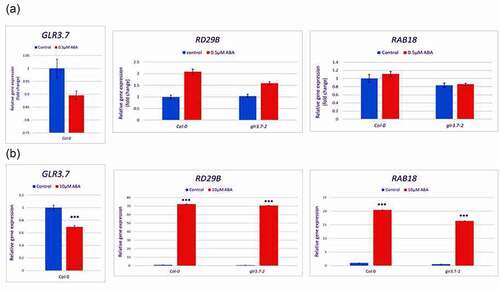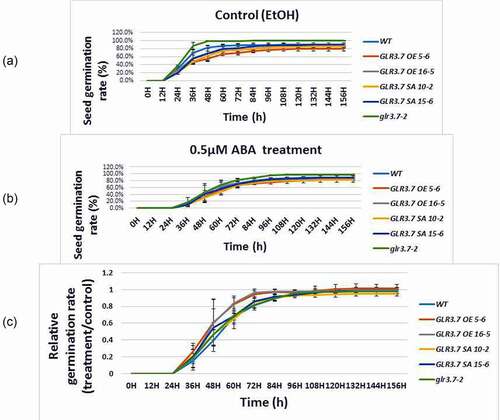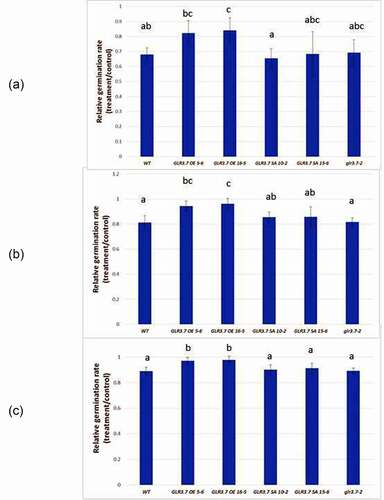Figures & data
Figure 1. GLR3.7 gene expression under ABA treatment. Seedlings of five-day-old wild-type were grown on ½ MS medium, and then treated with ABA or Ethanol (EtOH) for 2 hours before RNA extraction. (a) Expression level of GLR3.7, RD29B and RAB18 treated with 100% EtOH (control) and 0.5 μM ABA. (b) Expression level of GLR3.7, RD29B and RAB18 treated with 100% EtOH (control) and 10 μM ABA. RAB18 and RD29B are ABA-related marker genes. Gene expression level of UBQ10 was used as an internal control. These results indicated that GLR3.7 might be negatively regulated in ABA stress response. Each bar indicates mean ± SD in three biological replicates (N≧3, n≧9). Asterisks (*) indicate significant different compared with EtOH (control) (*p < 0.05, **p < 0.01, ***p < 0.001; Student’s t-test).

Figure 2. Seed germination of the GLR3.7 overexpression lines are less sensitive to ABA than that of Col-0. Seeds of both lines were plated on half-strength MS medium containing (a) 100% EtOH (control) or (b) 0.5 μM ABA for seed germination. Germination rate was observed every 12 h. (c) Quantitative statistical analysis of seed germination rate: germination rate in the ABA-treated group divided by the germination rate in the control group. The results were statistically analyzed by Student t test (mean ± SD, N = 3, total n ≥ 600, *P < 0.05).

Figure 3. Relative seed germination rate of the GLR3.7 overexpression lines are less sensitive to ABA than that of Col-0 and GLR3.7-S860A overexpression lines in ABA-treated (a) 60, (b) 72, (c) 84 hours. Seeds of both lines were plated on half-strength MS medium containing 100% EtOH (control) or 0.5 μM ABA for seed germination. Quantitative statistical analysis of seed germination rate: germination rate in the ABA-treated group divided by the germination rate in the control group. The results were statistically analyzed by one-way ANOVA with post hoc Tukey honestly significant difference test (significantly at P < .05). (mean ± SD, N = 3, total n ≥ 600, significantly at P < 0.05).

